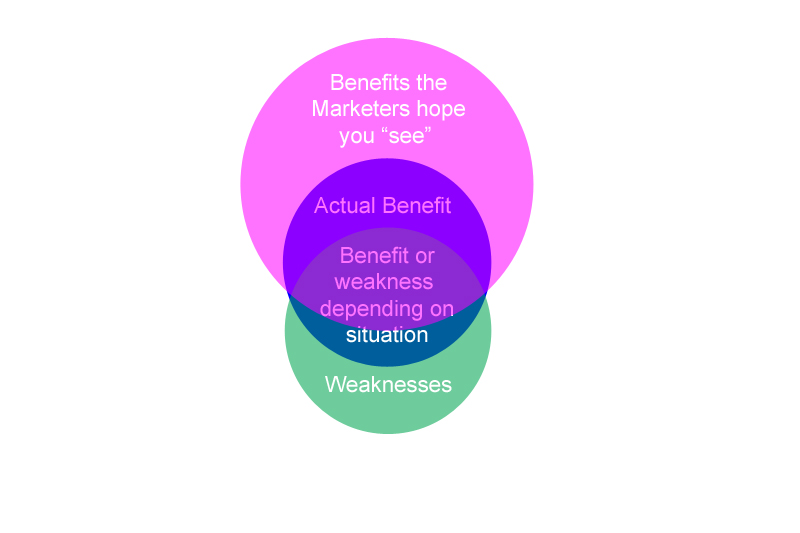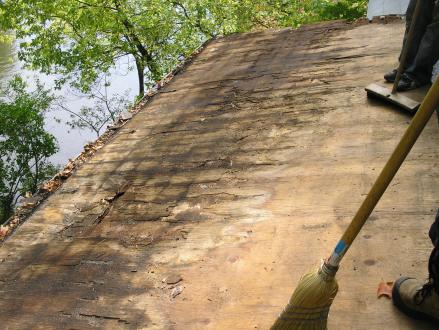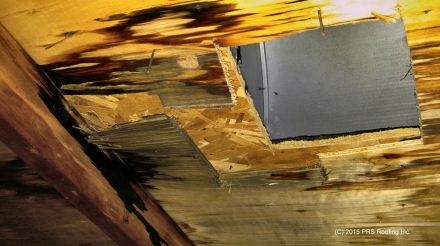There are plenty of marketing pieces on the web and elsewhere touting this material or that material as the “Best” or the “Most-Cost-Effective”, or the “Best Performer”. This post isn’t going to be one of them. Rather, I’ll direct your attention to the gap between the consumer expectations (based on marketing claims), and the actual performance. This isn’t to say that the manufacturers are lying through their teeth, but more that they are trying to encourage you to associate certain properties with their product that may not be justified by test results.
The first thing to recognize, is that each material has both strengths and weaknesses. There is a set of conditions for which the product is superbly suited. There is another set of conditions under which its performance will be entirely unsatisfactory. Roofing materials are part of the building envelope, and as such, are subject to the rules (the building code) which govern the minimum standards for construction. Certain materials have specific tests that define certain properties or performance criteria of these materials, and the building codes usually reference the minimum performance that under those tests is acceptable.
Manufacturers develop installation instructions and guidelines to ensure that their products will not be placed in situations where their weaknesses are exposed. Therefore, if the product is installed in conformance with the guidelines, then its behaviour should be in line with the manufacturer’s claims. This puts the emphasis on proper installation – where it is assumed that the installer knows the weaknesses of a product, and if the product is installed in a situation where the weaknesses will show up, to provide the appropriate additional protection to minimize the weaknesses.
A common example of this is the use of asphalt shingles on roofs where ice-dams can form. Asphalt shingles are designed to be a cheap, reasonably-long-lasting cover for roofs, and work by shedding water. To work well, they have to be installed on a slope that is sufficiently pitched to allow the water to run off freely, to be secured appropriately, and to have enough roof heat to allow the tar strips to bond the top and bottom layers of the shingles together. They are NOT designed to be waterproof. If a roofer installs them on a roof where he knows that there is a history, or likely possibility of ice damming, he knows he needs to install additional waterproofing (in the form of an ice-and-water shield membrane) to compensate for the fact that the shingles will let water in. Depending on the severity of the underlying issue, additional measures may also need to be taken to ensure that the weakness of asphalt shingles in this situation do not lead to an immediate problem.
Most homeowners are obviously not aware of the subtleties of proper installation, the nuances of “appropriate use”, and the different ways things can fail. Since their source of information is usually the glossy brochures of the manufacturer, their perception of what they are buying, may be quite different from the reality. Let me illustrate.

Above is a diagram illustrating a collection of benefits that a particular product can give.

Real-world products also have weaknesses of various kinds. Often the “Weakness” is visible only under certain situations. An example of this would be the ability of a smooth metal roof to shed snow. If you WANT the snow off your roof, then this is a benefit. If, on the other hand, the falling snow can damage property or cause injury to people, then this is a weakness.

Marketers present their products to be as attractive as possible, and try to associate all kinds of feelings and projected desires so that consumers are moved to buy the product. There is a lot of subliminal messaging going on, both through the text and the imagery used, to create a favourable impression of the product. It’s not to say that the marketers are lying or misrepresenting their products – but they often set up the ad so that we infer more than they actually say or claim. Examples of this would be “green” claims, or images with happy families, or beautiful couples in front of something unrelated. Another method is to use references to warranties to imply a durability that is not actually claimed in either the marketing literature or in the warranty.

Of course, most people looking at advertising and marketing material end up with an impression, and link that with a set of assumptions, giving a perception of the product that may be much more favorable than the product deserves. If this is a product presentation by a salesman/woman, then by now the process has become entertainment, with suspension of disbelief, and willingness to dream being part of the mix. Salespeople love it when it comes to this – because people work hard to make their dreams come through, and why let a few inconvenient facts get in the way?

In the end, you’re still getting only the actual benefits and weaknesses that the product inherently has. As noted before, the knowledge, skill, and care of the installer go a long way towards minimizing the weaknesses, and maximizing the benefits.
How does this impact our decisions as far as selecting the products for our roofs? Tune in for another post.
(c) 2014 Paul Grizenko







